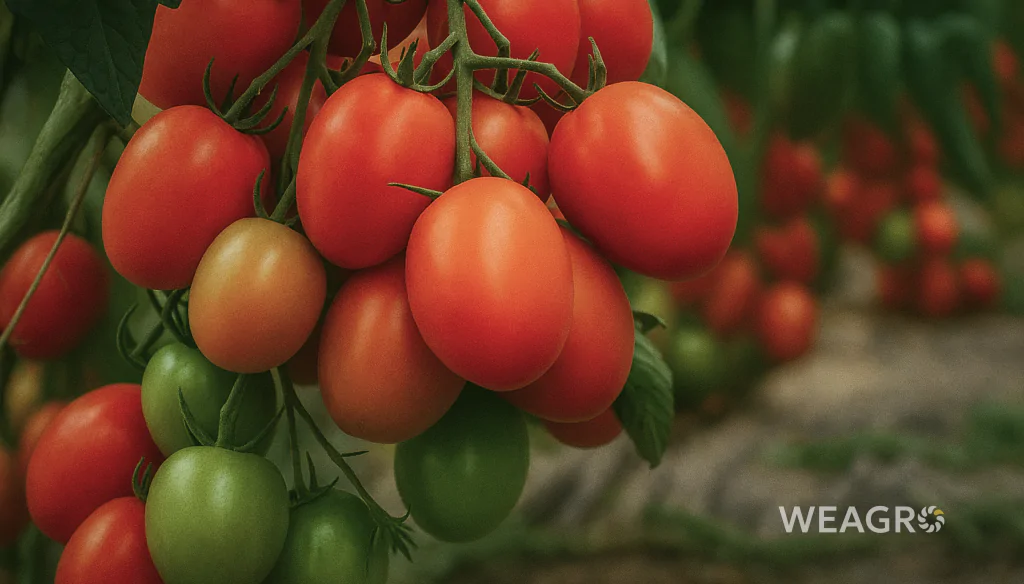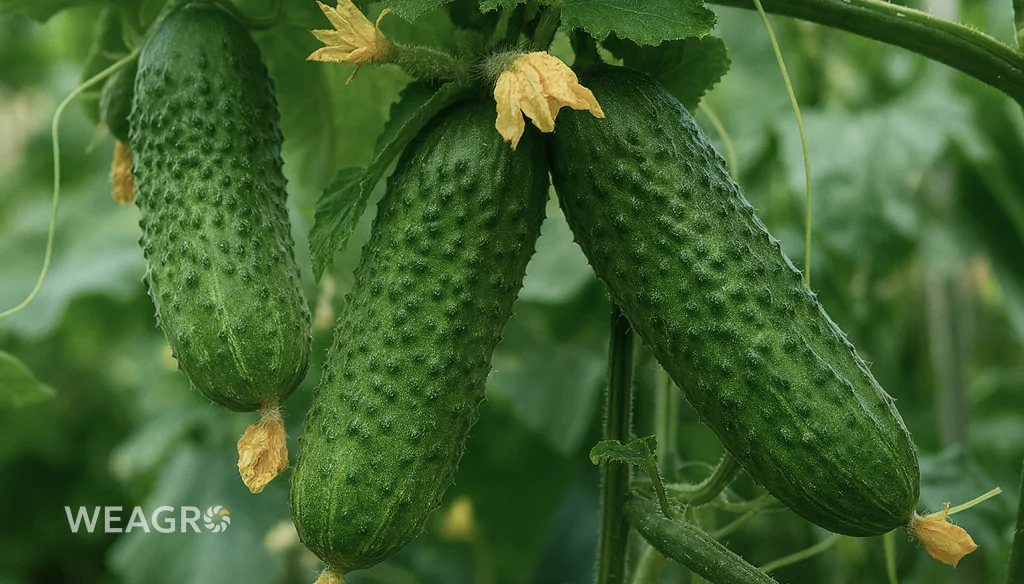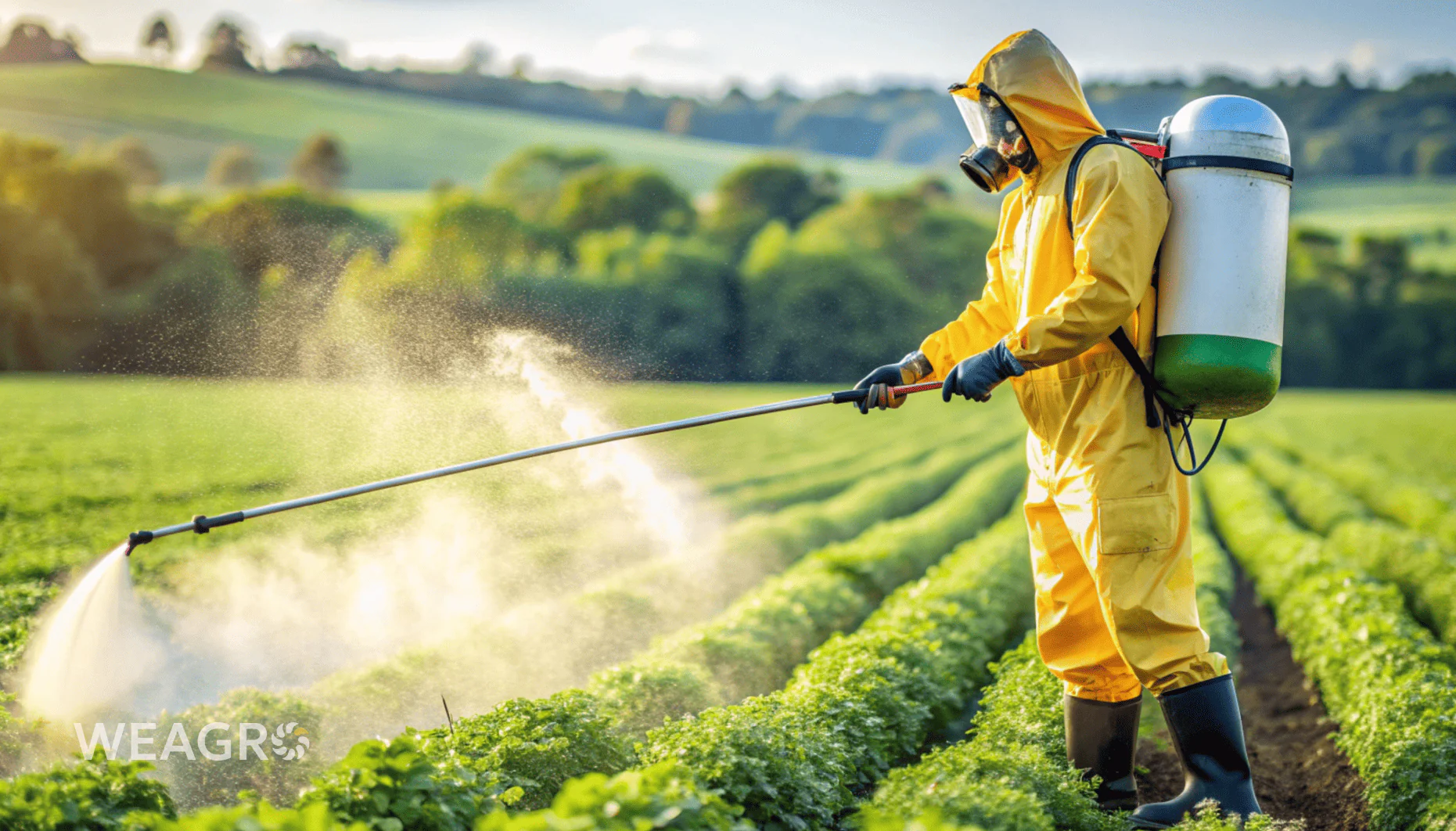July is the month when vegetable crops require maximum care. This is a time when small mistakes can lead to significant crop losses, while correct actions can lay the foundation for high marketability and product quality preservation. In open ground, plants experience high temperature stress, active influence of pests and diseases, and lack of nutrients.
According to the Ministry of Agrarian Policy, over 70% of all farms engaged in vegetable growing in Ukraine have a land bank of up to 1000 hectares. At the same time, the average level of vegetable yield in small farms is 20-30% lower compared to large producers – mainly due to lack of access to quality plant protection products, fertilizers, and modern agronomy. More than 65% of farms in 2023 stated that the main reason for yield reduction was delayed or reduced fertilization.
This article will help you navigate the most urgent tasks of July and avoid typical mistakes.
The online service WEAGRO allows farmers to purchase products necessary for organic agriculture immediately with payment deferral up to 365 days. Agro-installment for seeds, organic fertilizers, and agricultural machinery does not require extra paperwork, collateral, and is approved within 30 minutes. The online service cooperates with reliable suppliers.
Read also: Growing cucumbers in a greenhouse: technology, diseases, and pests
State of Vegetable Crops in July: Biological Features

Most vegetable crops in July are at the peak of vegetation:
- cucumbers, zucchini – in the phase of active fruiting;
- tomatoes, eggplants, peppers – in the phase of fruit formation and filling;
- cabbage – in the head formation phase;
- carrots, beets – actively growing root crops;
- onions – finishing vegetation, forming bulbs.
This is a period of maximum load on the root system, intensive photosynthesis, consumption of nutrients and water. It is in July that the marketable quality and storability of products are established.
Main challenges of July for vegetable growers
- Temperature stress. On hot days, the air temperature exceeds +30-35°C, which suppresses photosynthesis, causes growth inhibition, fruit burns, and general crop depletion. Greenhouse vegetables without effective ventilation overheat even more.
- Soil depletion. Vegetation is at its peak, crops actively absorb nutrients. In the absence of fertilization – there is a decrease in leaf mass, fruit shrinkage, accumulation of nitrates.
- Pests and diseases. July is the period of highest spread of whitefly, mites, late blight, downy mildew. In conditions of high temperature and humidity, diseases develop rapidly – crop losses can reach 20-50%.
- Lack of water. Evaporation exceeds 5-6 mm per day. Without watering, plants wilt and slow down development. Soil drying is one of the main reasons for ovary shedding.
- Financial difficulties. During this period, many farmers face cash gaps – costs for protection and nutrition increase, but revenue has not yet arrived. Postponing decisions is the main reason for losses per hectare.
Watering: how much, when and how?
The main goal is to maintain moisture in the 20-30 cm layer at 70-80% of field capacity.
Tomatoes:
– Water once every 5-7 days, 25-30 l/m².
– Do not water frequently and in small amounts – this promotes fruit cracking.
– It’s important to alternate with loosening.
Cucumbers:
– Water 2-3 times a week, 15-20 l/m².
– Most sensitive to lack of moisture.
– After watering – mulching.
Cabbage:
– Optimal scheme – 30-40 l/m² twice a week.
– Likes cool water (18-20°C).
Onions:
– Watering is finished after the leaves fall.
– Excess moisture during this period reduces storability.
Fertilizers: What to Give in Mid-Season
In July, plants need not so much nitrogen as potassium, calcium, boron, magnesium.
Tomatoes:
- Fertilizers for tomatoes should contain calcium and boron.
- It’s important to control blossom-end rot.
Cucumbers:
- Fertilizing cucumbers with potassium and magnesium – weekly.
- You can use complex fertilizers with humates.
Cabbage, beets, carrots:
- It’s important to fertilize with boron (10-15 g/10 l of water).
- Use microelements in chelate form.
Foliar feeding is extremely effective during the fruit filling phase. Conduct it in the evening or morning, adding an adhesive.
Protection of Vegetable Crops: July Phytosanitary Calendar

Main Pests:
- Spider mite
- Aphids
- Whitefly
- Cutworms (especially on cabbage and tomatoes)
Main diseases:
- Late blight of tomatoes
- Powdery mildew on cucumbers
- Downy mildew of onions
- Gray mold
- Alternaria
Tips:
- Bio-products based on Trichoderma, Bacillus subtilis are effective in prevention.
- Alternate chemical plant protection products with bio-preparations (IPM).
- Do not spray in heat (+28°C and above).
- Control water pH (5.5-6.5) – affects the effectiveness of plant protection products.
Common July Mistakes
- Spraying during the day or in heat.
- Exceeding nitrogen norms – causes unstable fruits.
- Watering ‘for show’ – frequent and superficial.
- Ignoring acidification of hard water.
- Refusing fertilizers during stress periods – ‘savings’ that lead to losses.
How not to Lose the Harvest if Resources are Scarce?
The financial factor is often decisive. If you didn’t manage to purchase – the yield dropped.
The key to successful cultivation is proper planning and strict control of all stages. And our modern online service WEAGRO will help farmers purchase necessary material and technical resources on installment without collateral and extra documents. This is a convenient financial tool that supports agricultural producers in achieving high results.
Read also: How to find out the amount of land tax and how to pay it
Conclusion
July is the month that determines the fate of the vegetable harvest. It is now that plants are particularly vulnerable to weather stress, pests, lack of moisture and nutrients. Timely reaction, precise agrotechnical actions, and competent resource management are the key to a high yield, even in conditions of limited budgets.
This requires not only knowledge but also access to quality materials – fertilizers, plant protection products, seeds, consultations. The WEAGRO online service provides such an opportunity: to buy on time and pay after harvesting. This is a strategy that allows you to focus on the main thing – growing quality products without losing the harvest due to financial delays.
Work for results – not for risk. And may each July day bring you closer to a stable and profitable season.










